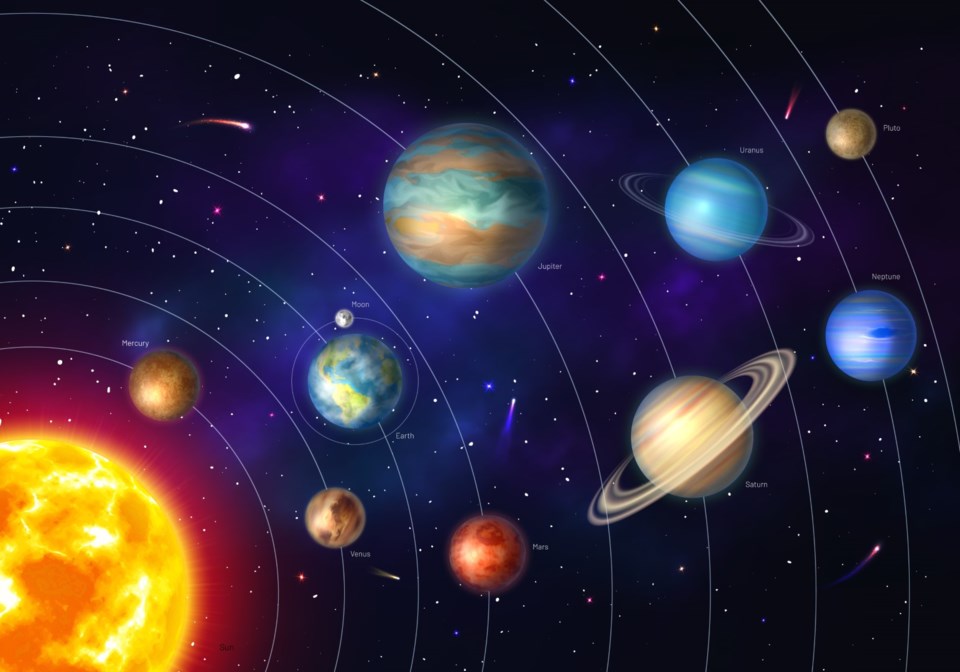The moon has just passed last quarter as December opens, and Neptune and Jupiter are both three degrees north Dec. 1. Uranus is occulted Dec. 5 for Eastern Hemisphere observers; a close 0.7-degree conjunction for western viewers. On Wednesday, Dec. 7, Mars is occulted for viewers in the Western Hemisphere. Watch for it beginning at 9 CST. It is fascinating to watch the Solar System in motion as the full moon covers one of the planets for a time. The event can last for upwards of an hour, as first the planet blinks out of sight on the east limb of the moon, then pops back into view an hour (or so) later at the western edge. Dec. 11, Pollux, one of the Gemini twins, is 1.8 degrees north of the moon, which happens to be at its furthest distance from Earth – apogee of 404,888 km. New moon is Dec. 23, and perigee is on the next day, making for extreme tides for coastal areas. In a difficult observation Dec. 24, Venus and Mercury are three degrees and four degrees, respectively, north of a mostly invisible moon. Dec. 26, Saturn is four degrees north; Neptune is three degrees north Dec. 28; Jupiter is 2 degrees north Dec. 29.
Mercury leads Venus up the western evening ecliptic for most of the month, ending in a conjunction (both objects on the. same meridian) Dec. 29. Reach for your binoculars for this event to make it more enjoyable.
Venus hugs the horizon shortly after sunset, paired up with Mercury all month, and the moon Dec. 23 (see above).
Mars is at its closest approach to Earth for 2022 on Dec. 1; opposition is Dec. 8, owing to the Red Planet’s asymmetrical orbit (not round). Be sure to watch for the occultation Dec. 8, as noted above.
Jupiter shines prominently throughout the evening hours in the constellation Pisces, the Fish. The moon passes by twice in December, first as a waxing gibbous apparition Dec. 1, and as a waxing crescent Dec. 29.
Saturn is in the southern sky at evening twilight, joining up with the moon Dec. 26.
Uranus is visited by the moon Dec. 5, as noted above.
Neptune is retrograding in Aquarius until the 4, becomes stationary, and begins prograde therafter.
Winter solstice is on the evening of Dec. 21.
James Edgar has had an interest in the night sky all his life. He joined The Royal Astronomical Society of Canada in 2000, was national president for two terms, is now the editor of the Observer’s Handbook, and production manager of the bi-monthly RASC Journal. The IAU named asteroid 1995 XC5 “(22421) Jamesedgar” in his honour and in 2021 he was awarded a Fellowship of the RASC.



